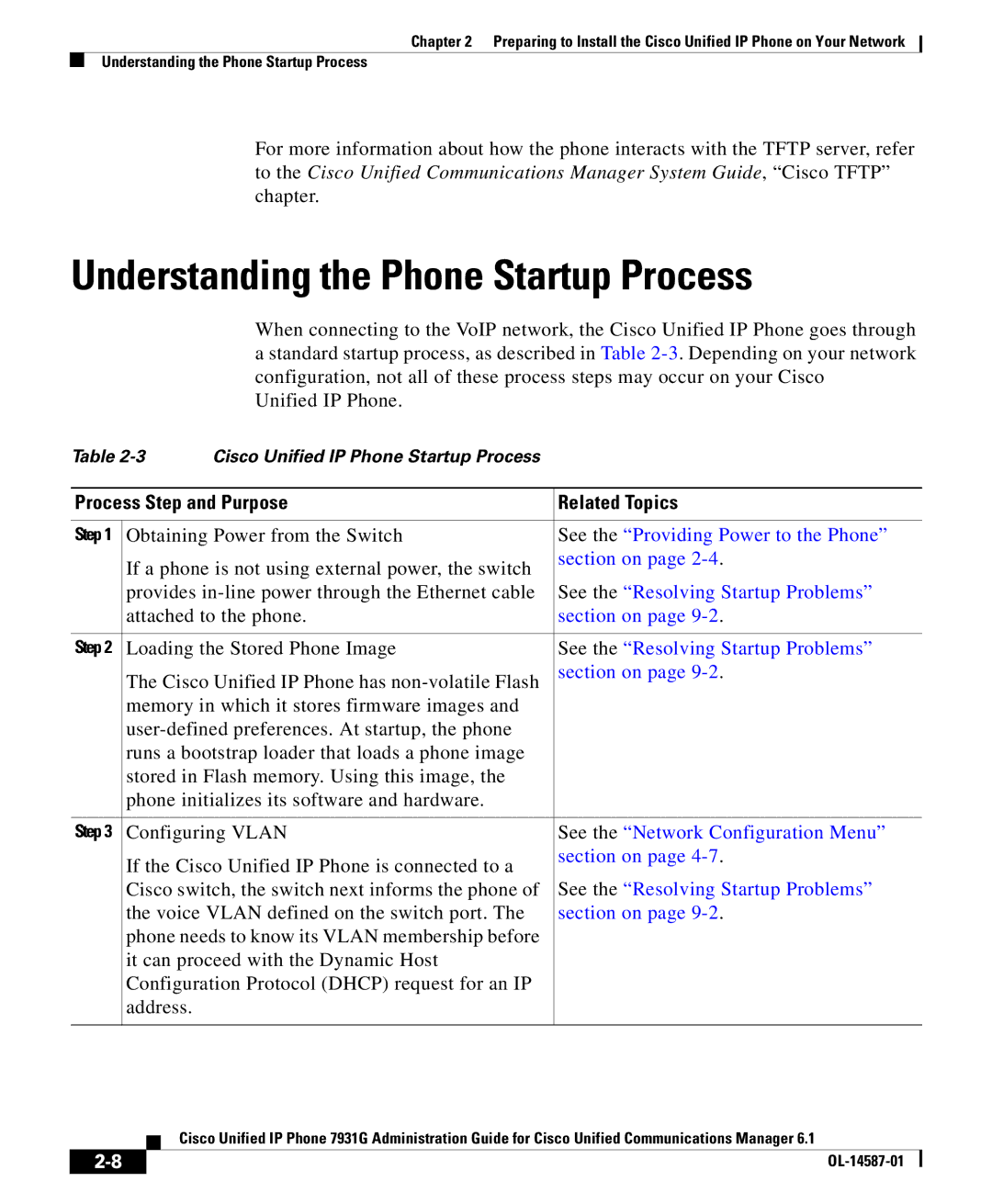
Chapter 2 Preparing to Install the Cisco Unified IP Phone on Your Network
Understanding the Phone Startup Process
For more information about how the phone interacts with the TFTP server, refer to the Cisco Unified Communications Manager System Guide, “Cisco TFTP” chapter.
Understanding the Phone Startup Process
When connecting to the VoIP network, the Cisco Unified IP Phone goes through a standard startup process, as described in Table
Unified IP Phone.
Table | Cisco Unified IP Phone Startup Process |
| |
|
| ||
Process Step and Purpose | Related Topics | ||
|
| ||
Step 1 | Obtaining Power from the Switch | See the “Providing Power to the Phone” | |
| If a phone is not using external power, the switch | section on page | |
|
| ||
| provides | See the “Resolving Startup Problems” | |
| attached to the phone. | section on page | |
|
|
| |
Step 2 | Loading the Stored Phone Image | See the “Resolving Startup Problems” | |
| The Cisco Unified IP Phone has | section on page | |
| memory in which it stores firmware images and |
| |
|
| ||
| runs a bootstrap loader that loads a phone image |
| |
| stored in Flash memory. Using this image, the |
| |
| phone initializes its software and hardware. |
| |
|
|
| |
Step 3 | Configuring VLAN | See the “Network Configuration Menu” | |
| If the Cisco Unified IP Phone is connected to a | section on page | |
|
| ||
| Cisco switch, the switch next informs the phone of | See the “Resolving Startup Problems” | |
| the voice VLAN defined on the switch port. The | section on page | |
| phone needs to know its VLAN membership before |
| |
| it can proceed with the Dynamic Host |
| |
| Configuration Protocol (DHCP) request for an IP |
| |
| address. |
|
|
|
|
|
|
| Cisco Unified IP Phone 7931G Administration Guide for Cisco Unified Communications Manager 6.1 |
|
